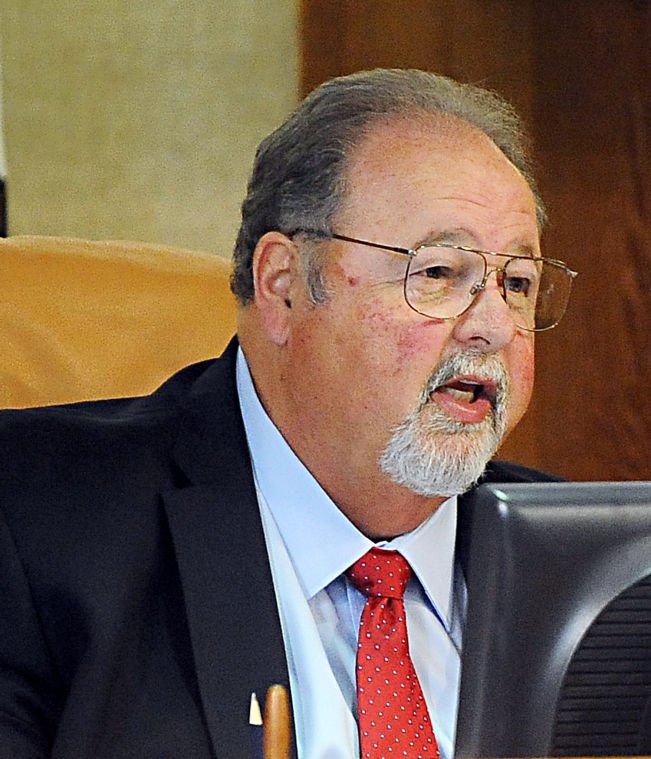In a 4-3 vote, the Gilroy City Council on Monday took a big step in approving the design of a 73-unit housing project south of Hecker Pass Highway.
Called Heartland Gardens, the gated residential neighborhood will be located at 2730 Lone Oak Court and consists of 36 lots ranging in size from 3,500 square feet to 5,999 square feet and 37 lots from 6,000 square feet to 20,100 square feet.
The private development will have looping streets, 2.3 acres of open space, including a centrally located 1.5-acre park and access to the Uvas Creek trail parkway and bike path.
This isn’t a new project—it was approved by the city council in 2005 as part of the Hecker Pass Specific Plan, but the council now has the power to approve specific lot designs.
Construction of the project will be carried out in phases, with the first phase consisting of 40 lots, the second phase 27 lots and the remaining six lots completed in the final phase.
The applicant, Meritage Homes, will also include off-site trail and landscape improvements totaling 3.53 acres along the Uvas Creek trail parkway south and west of the project.
During public comments neighbors voiced concern over recent flooding of drainage ditches and potential traffic congestion due to the new housing.
“We have told the developer from the beginning about the flooding problem there,” said nearby resident Bette Thomas, who has been living at Lone Oak since the 1980s. She said after the first major rains of last month, Meritage Homes attempted to alleviate the flooding but ended up causing water to pool up in front of her house.
Subsequent fixes were installed, Thomas said, but they are waiting to see if they hold up under future storms.
“We don’t know if the problem has been fixed; won’t know that until we get more rain,” she said.
The Planning Commission, which approved the project on Feb.16, and nearby residents both expressed concerns about potential traffic issues and wanted to delay the issuance of any building permits until a proposed roundabout at Hecker Pass Highway and Autumn Drive was constructed.
But the time for raising such concerns is during the tentative map application phase, according to the city attorney, which has already passed.
Housing designs are the main focus of the architecture and site review.
Interim Planning Manager Rebecca Tolentino said the applicant is currently working with Caltrans and undertaking an environmental review of the proposed roundabout, which has caused some delay.
Councilman Dan Harney said he was concerned that plans for the roundabout were not ready for review.
Tolentino said once the plans were approved by Caltrans and completed required environmental analysis, they would be presented to City Council as part of an application for a Hecker Pass Specific Plan amendment application sometime this summer.
The original plan called for a traditional intersection at Autumn Drive and Hecker Pass Road but a roundabout was determined to leave less of a footprint, and requires fewer of Gilroy’s heritage cedar trees to be felled.
Councilman Fred Tovar, who, previous to being elected to the City Council in November, served on the Gilroy Unified School District Board of Trustees, was concerned about the development’s impact on the school district.
School-aged children who live in the new development are eligible to attend Las Animas Elementary School, Ascencion Solorsano Middle School and Gilroy High School.
Mayor Roland Velasco said he would vote against the development because he had previously voted against it during the tentative map phase.
In the end, the architecture and site review was passed 4-3, with Mayor Roland Velasco, Councilman Fred Tovar and Harney dissenting.
Arts Center lease renewed
Continued from the last city council meeting on March 6 to clarify contract language, Gilroy representatives approved a new four-year lease between the City of Gilroy and the nonprofit Gilroy Arts Alliance, which manages the Gilroy Arts Center on Monterey Road.
The approximately two acres of city-owned land, which includes the Gilroy Demonstration Garden and Arts Center building, was purchased by the city nearly 13 years ago to develop into a multi-million-dollar cultural and performing arts complex.
While those grand plans, approved by city council almost a decade ago, to construct a 28,000-square-foot arts center have been scuttled, Executive Director Kevin Heath said incredible progress has been made in recent years.
“When it comes to programming, exhibits, classes, events and theater, we’ve had time to see what works, and what doesn’t work in Gilroy,” said Heath, who also runs the Limelight Actors Theater. “We’ve come to understand small growth is not only attainable, it’s sustainable.”
Moreover, stronger alliances have been forged between the Gilroy Arts Alliance and the City of Gilroy, he said, and the current city administrator, Gabriel Gonzalez, and Mayor Roland Velasco have shown a very strong interest in the Art Center’s success.
“I see this as a very positive step for the future. I have worked closely with the GAA president and vice president to create a strong business image for the Center. I feel we have been taken more seriously than in the past by the new regime and the community at large. This is incredible progress,” he said.
While the Arts Alliance pays a nominal $1 per year in rent to the city, the group is responsible for paying the property taxes, major repairs up to $5,000 and any improvements or alterations of their own design.
In 2004, Gilroy was in the process of buying derelict property, including a Chinese restaurant and taqueria, to build a state-of-the-art arts and culture center, that Heath said would be the “crown jewel of Gilroy.”
“The large theater, classrooms, and dedicated gallery in the lobby area, were beautiful,” recounted Heath.
After the buildings were acquired and demolished, Bonfante Gardens became at risk of being partitioned and sold off to developers when city officials stepped in and bought the family theme park that would become Gilroy Gardens in 2008.
“The original goal was to build the Council-approved 28,000-square-foot building, but the economy turned. Council voted to use the approved funds for the Center, and switch the funds over to purchase Gilroy Gardens. They were in danger of closing, at the time. We were left with dirt lots and an old Salvation Army building.”
In 2010, the Gilroy Arts Alliance Board of Directors agreed to install the Gilroy Demonstration Garden on the property. The community garden became an independent registered nonprofit in 2012.
“The current Gilroy Arts Alliance board and I have been working with the garden on making needed changes to the space they use, so that it will become a more secure and aesthetically pleasing part of our land and better complement the work the alliance puts into our building and land,” said Heath.
The existing building does not have any specific upgrades planned for 2017, but the alliance will be meeting with city staff to discuss possible changes to the building to increase occupancy, currently capped at 49.















